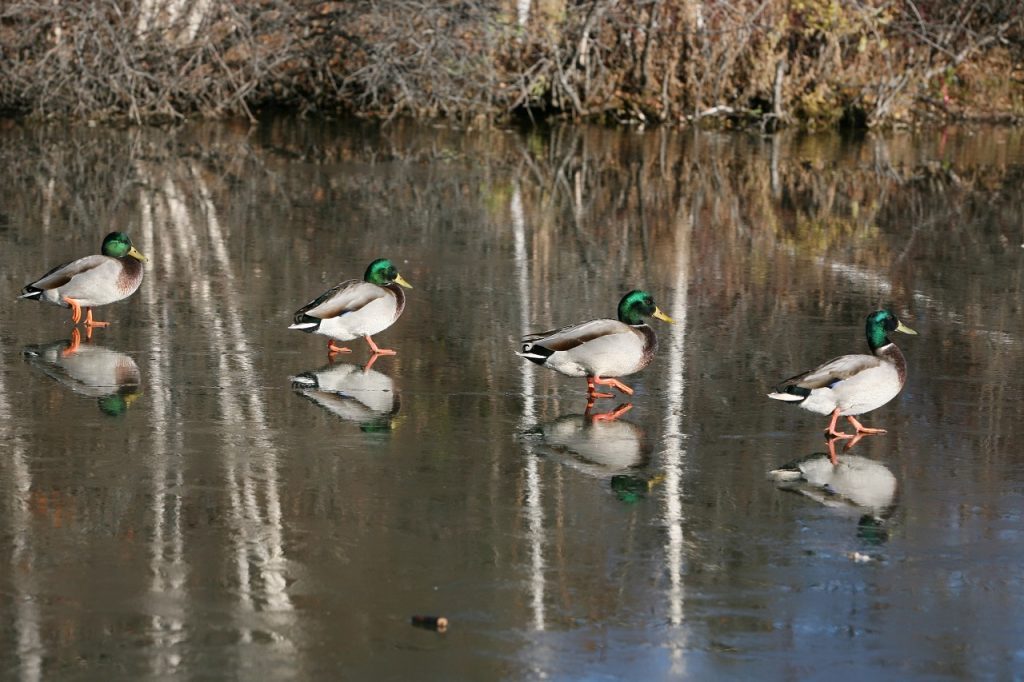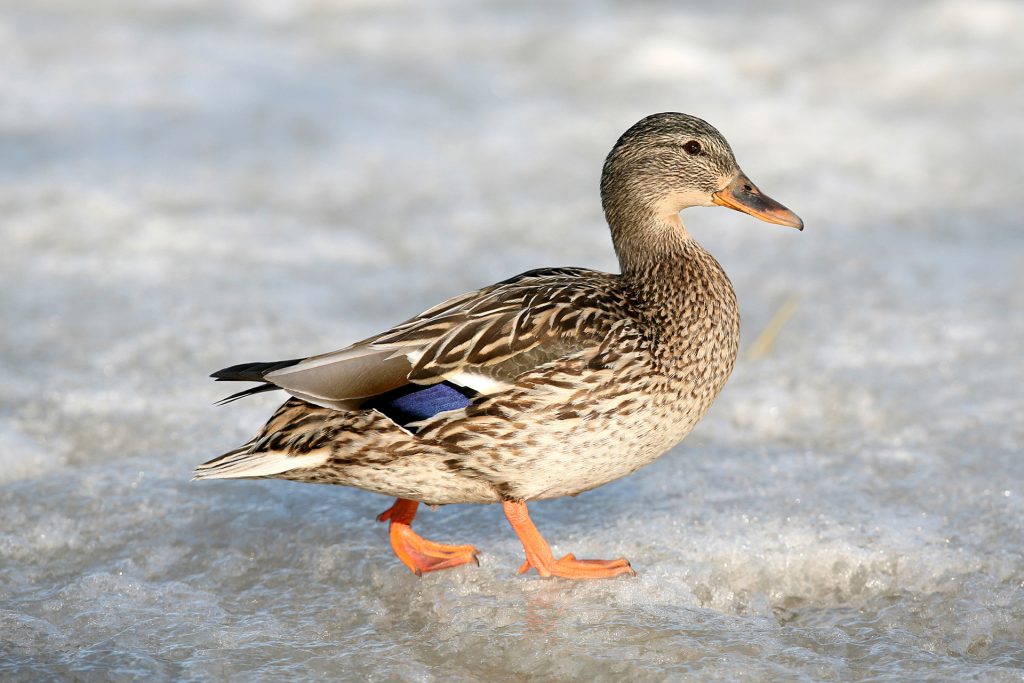Getting Cold Feet?
Web-footed and fancy free—DUC scientists explain how ducks are able to handle ice and snow underfoot.
There’s no sense in denying it. Winter is at hand. Many Canadians have already made the switch to winter tires on their vehicles to handle ice and snow on the roads. That’s one way we cope.
But what about ducks that might stick around during the snowy months? How do they adjust to the cold? For example, have you ever spotted a duck standing on a sheet of ice and wondered how they kept their feet from freezing?
In a way, they’ve changed their tires too. From the inside.
“Ducks are able to regulate the temperature of their feet through a process known as counter-current heat exchange,” says David Howerter, PhD, DUC’s director of national conservation operations.
How does counter-current heat exchange work? Picture a two-lane highway, in which one stream of traffic is traveling towards the heart (venous blood) and in the other lane, traffic is traveling towards the feet (arterial blood). As these two streams of traffic run side-by-side, they exchange heat.
When a duck’s feet are in contact with a cold surface, its body relies on counter-current heat exchange to lower the temperature of the blood destined for its feet. This process occurs in the leg, where arterial blood is cooled by venous blood, which in turn warms up a few degrees.

“By lowering the temperature of blood flowing through its foot, ducks are able to conserve heat,” says Howerter. This is because the smaller the temperature difference between two objects (in this case, ice and feet) the more slowly heat is exchanged.
Counter-current heat exchange is so effective, that in the case of mallards just five per cent of their total body heat escapes through their feet. This is despite the fact that they’re in direct contact with a cold surface.
When ducks feel discomfort on really cold days, Howerter says they’ll take extra measures to keep warm.
“If a bird is especially cold, it may lift one foot and tuck it into its feathers to help conserve heat. Another thing that you may see a duck do is tuck their bill into their feathers.” This practice serves two purposes. First it warms the bird’s bill. And second, “by placing its bill under its feathers, a duck can draw in warmer air,” says Howerter.
Counter-current heat exchange is a process that happens in ducks, as well as other species like whales and sea turtles.



